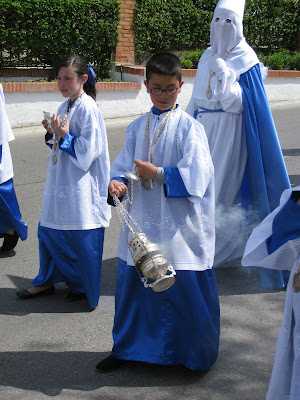 Sunday 5th April 2009
Sunday 5th April 2009Easter week, known in Spain as Semana Santa, begins with the Domingo de Ramos (Palm Sunday) processions throughout Spain.
In Ronda the procession, known as 'La Pollinica’ starts from the popular quarter of La Dehesa and winds its way through the town centre, via the Tribuna waiting at the Plaza del Socorro, before returning to La Dehesa. It commemorates the triumphal entrance of Jesus into Jerusalem. Huge numbers of people line the streets with their palms or branches of olive trees.
'La Pollinica' means the little donkey on whose back Jesus entered Jerusalem
The platforms carrying ‘The Throne of Christ’ and ‘The Throne of the Virgin’ were made at the Trade School of Ronda in 1995.
As last year, I met up with a group of friends and we all waited for the procession at the Café Colon, opposite the Santa Maria church in Calle Jerez. Unfortunately, Lin was unable to come with me this year as she is in Cyprus and was sadly missed.









No comments:
Post a Comment